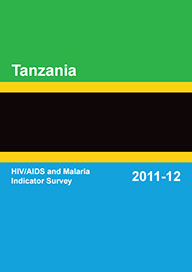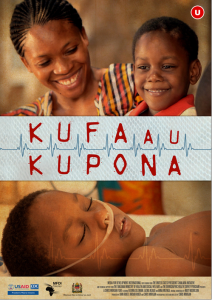Kufa au Kupona (Fever Road)
Malaria kills more than 500,000 Africans every year. Consistent use of insecticide-treated mosquito nets (ITNs), early diagnosis and treatment, and prophylactic use of antimalarials during pregnancy can save thousands of lives. But according to the 2011-12 Tanzania HIV and Malaria Indicator Survey (THMIS), many families are not practicing these life saving measures.
To get the message about malaria prevention practices out to Tanzanian communities, The DHS Program collaborated with USAID, the President’s Malaria Initiative, the National Malaria Control Programme, and Media for Development International to produce a film showcasing real life stories of Tanzanians dealing with malaria. Filmed in Dar es Salaam with local actors, Kufa au Kupona (Fever Road), tells three stories. The first is about a young boy who almost dies of malaria because his parents take him to a witch doctor instead of a health care facility when he gets sick. The second story focuses on Jazira who contracts malaria during pregnancy because she does not take IPTp. Five-year-old Brighton, the subject of the third story, is mistakenly treated for malaria when his symptoms are actually due to a urinary tract infection.
Kufa au Kupona has been broadcast on 6 national television stations in Tanzania and widely disseminated in high malaria prevalence areas through a partnership with the Tanzania Video Library Association, at health care facilities with video equipment, and through mobile video vans. Now, through an arrangement with FilmAid, Kufa au Kupona will be publicly screened at refugee camps in Africa reaching tens of thousands of people at risk for malaria.
Does Kufa au Kupona have an impact? A follow-up survey of more than 800 women and men leaving the video showings in Tanzania found that virtually all respondents liked the film, and many wished it had been longer. All but two of the respondents said that the film influenced them to take action: 20% said they would get tested for malaria the next time they got sick; 22% said they would use mosquito nets; and 18% planned to discuss the film with other people.




Dear Ms Liskin,
Many thanks for sharing findings on this issue. My feeling is that for this kind of survey “gender” is a key element. As the survey concerned 800 (men and women), splitting the percentage of response by sex should have an added value in the exercise.